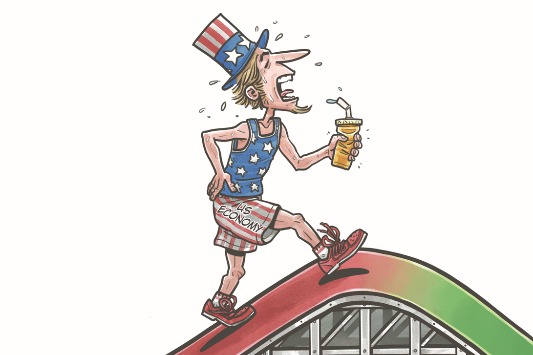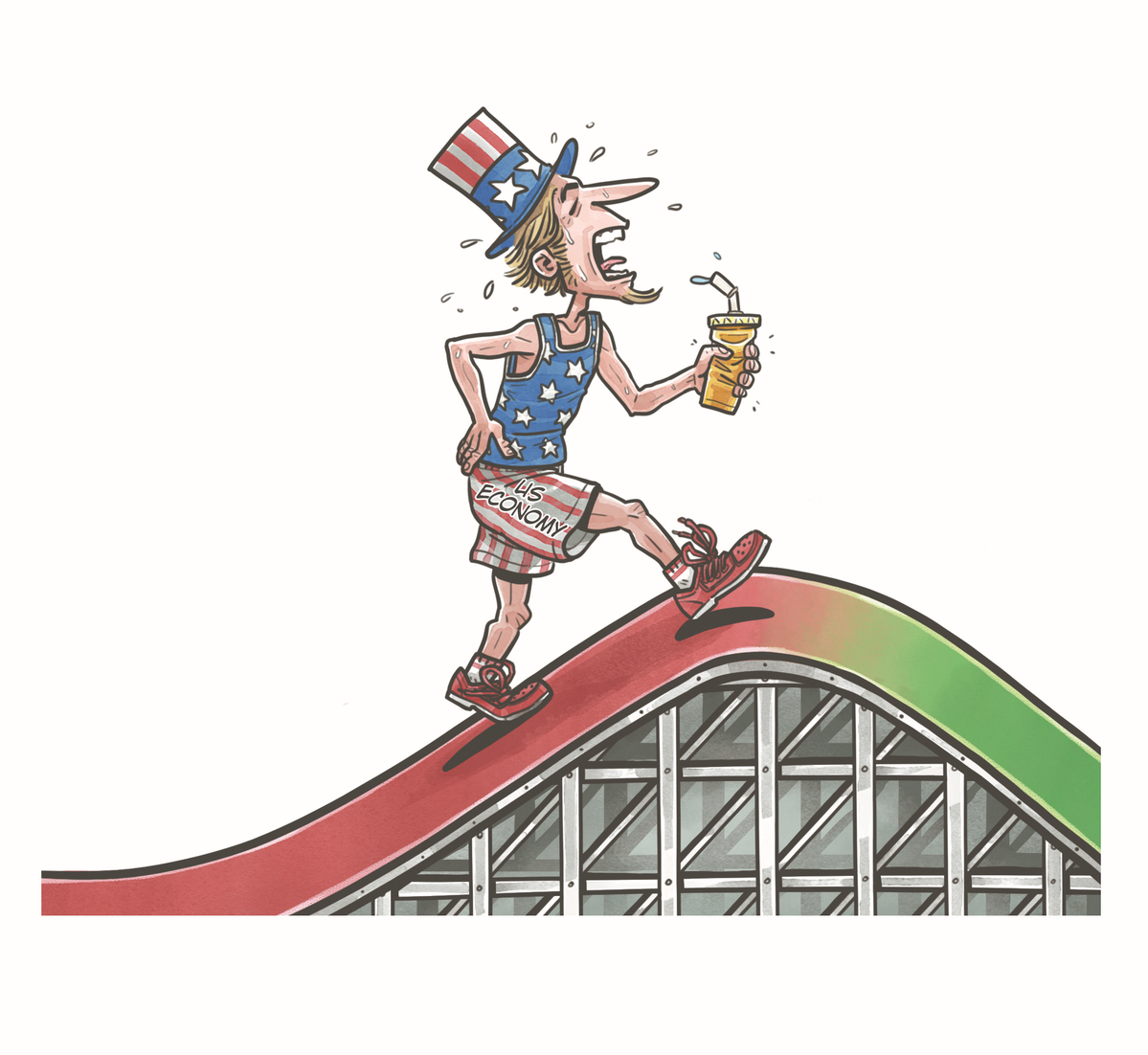

The economy of the United States has been on a strong recovery track since the beginning of the year, and according to Federal Reserve predictions, the US GDP may achieve an annualized year-on-year growth of 5.6 percent in the third quarter, which will be the highest expansion spurt in nearly 20 years.
There are many driving forces behind such a strong uptrend to be sure. But the basic logic behind the reacceleration of the US economy, as far as we are concerned, stems from the staggered transformation of US economic growth momentum in its economic cycle. In 2021 and 2022, its economic growth was largely driven by consumption — mainly durable goods — and nonresidential property investment. Heading into the second half of 2022 and the third quarter of this year, service consumption and residential property investment continued to support another acceleration of the US economy.
From the perspective of spending, although the Fed’s continuous interest rate hikes have pushed the benchmark interest rate to record highs, excess savings of the household sector have been supporting private consumption expenditures to maintain a strong growth level. At the same time, affected by the lack of existing housing inventory, homebuyers are shifting their focus to new homes, thereby boosting the growth rate of housing investment.
Based on our calculations, real estate and related sectors contribute close to 20 percent to the US GDP. In addition, in the past two years, with the global supply chain gradually stepping out of the shadows of woes like the COVID-19 pandemic, the US re-industrialization strategy has been gathering pace, thus supporting non-real estate investment, especially manufacturing investment, to maintain steady growth.
According to information unveiled by the US government, the contribution of private consumption expenditure to economic growth in the third quarter is expected to exceed 50 percent, which represents a quarterly growth of 2.9 percentage points. Inventory investment follows up on the list, pulling up the figure by 1.31 percentage points. Nonresidential fixed-asset investment may contribute another 0.47 percentage point, while residential investment may turn positive during the reporting period, with its contribution rate estimated at 0.27 percentage point.
In terms of industrial data, there has been consecutive growth in retail sales in the second and third quarters in the US, with consumption of nondurable goods and services maintaining strong momentum. Among them, food and catering, cultural and sports entertainment, clothing and healthcare all record better-than-expected performances. However, consumption of durable items has generally turned negative since July.
In the real estate sector, the US housing market, beyond analyst expectations, has rebounded again on a monthly basis, and new home sales hit a nearly 17-month high in July, confirming that the imbalance between supply and demand in the US real estate market still exists.
The figures above are indeed telling a story that the US economy is peaking. However, they are also indicating a downtrend not far away. First, support from excess US household savings for private consumption spending is weakening. In fact, contribution from this area has already slowed marginally since the second quarter. However, due to the rapid decline in US inflation since the second quarter, some inflationary pressure has been released, and it may not be that obvious as the marginal support effect of excess savings on consumption is hedged by the decline in inflation.
Also, according to our estimates, there was still $1 trillion in excess US household savings at the end of the first quarter. A total of $700 billion was consumed in the second and third quarters, but considering the monthly Treasury Department’s financial transfer support to households, it is expected that households will still have $600 billion or $700 billion of excess savings by the end of the third quarter. These excess savings are expected to be exhausted in the second quarter of next year, but the negative impact on consumption expectations is likely to be reflected at the end of the fourth quarter of this year and the first quarter of next year.
Second, though there is a rebound in US residential property investment, we don’t expect a long uptrend for real estate investment. In fact, until the third quarter, the contribution of residential property investment to US GDP has been negative, and the fact that such a contribution turned positive in August reflects the volatile impact of housing inventory issues on housing investment.
Although the current sluggish US home inventory situation has accelerated new home sales and a recovery in housing investment confidence, the increase in existing home inventory is expected to begin to dampen residential property investment growth by the end of the year due to the implementation of the Housing Supply Action Plan introduced by the current US administration.
On the other hand, US mortgage rates have reached a new high, and buyers’ willingness in the real estate market has thus been suppressed from the demand side. Historically, the US real estate cycle is highly correlated with household credit cycles, and if the corporate and residential property sectors cannot see credit expansion in the short to medium term, it will be difficult for real estate investment to rely on supply-side support to sustain a longer period of expansion. Therefore, we believe that once the supply of existing housing stocks recovers in the short to medium term, the contribution of residential property investment to the economy may decline rapidly.
Last but not least, the contribution of nonresidential property investment to GDP is limited. Although in the medium to long term, the US manufacturing sector will enter a new round of inventory replenishment cycle, coupled with industrial policy support amid US reindustrialization, it will be a high probability event for high-end manufacturing to maintain strong growth. However, we have to say that the driving force of manufacturing investment may be limited, as it recently accounts for 18 percent of nonresidential property investment and 5-10 percent of total private sector fixed-asset investment, while private sector fixed-asset investment contributes 15-20 percent to GDP. Therefore, even if manufacturing investment enters a boom cycle in the short to medium term, the contribution to real GDP will still be limited, which is expected to drive GDP growth up by only 0.2-0.4 percentage point.
As for US employment, we have seen that August nonfarming employment data are actually not bad, while the actual situation is still pending further verification based on September performance. Since April, the final value of nonfarming data have been revised downward several times in a row, and the frequency of collecting enterprise employment data has also slowed, which may be signs of a cooling labor market. Such an issue — if seen coupled with other indicators such as wage growth, the labor participation rate and the final unemployment rate in the US — is telling a story that the US labor market may be showing signs of a downtrend.
The writers are Cheng Shi, chief economist at ICBC (Industrial and Commercial Bank of China) International, and Zhang Hongxu, senior economist at ICBC International.
The views do not necessarily reflect those of China Daily.






